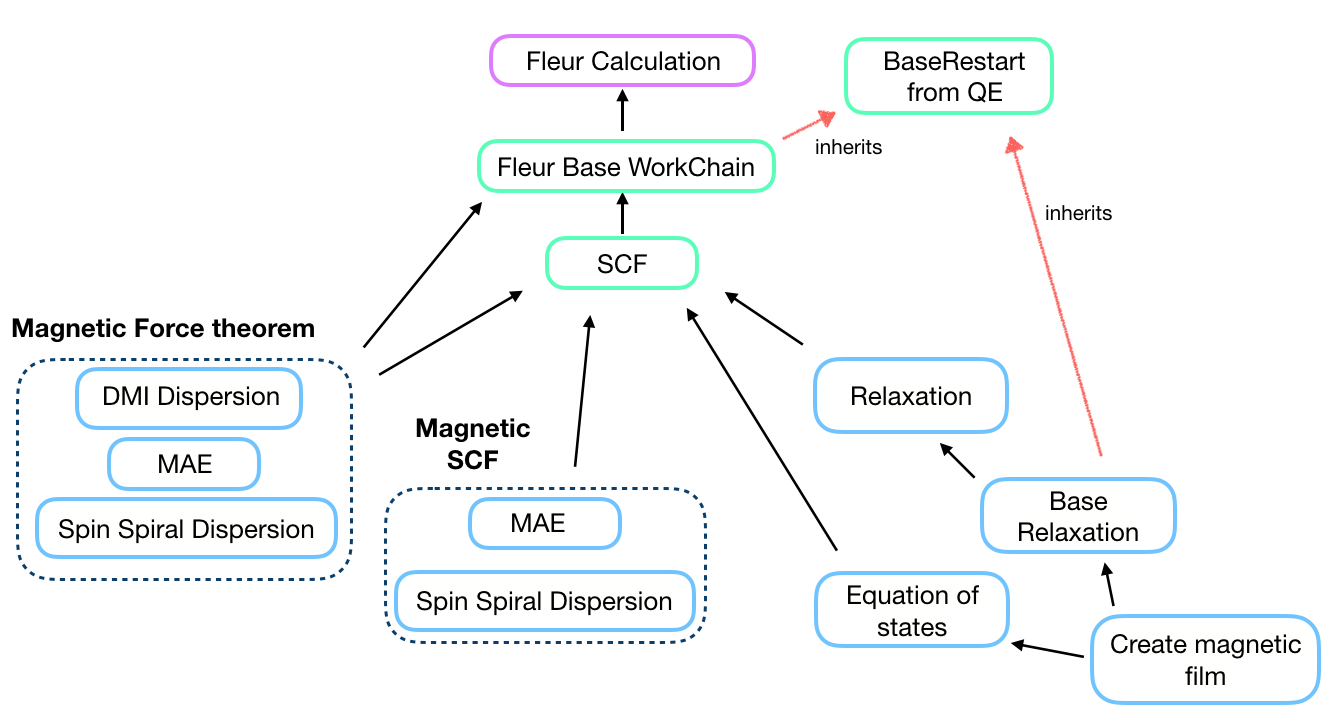AiiDA-FLEUR WorkChains
General design
All of the WorkChains have a similar interface and they share several common input nodes.
Inputs
There is always a wf_parameters:
Dict node for controlling the workflow behavior.
It contains all the parameters related to physical aspects of the
workchain and its content vary between different workchains.
Note
inpxml_changes key of wf_parameters exists for most of the workchains.
This list can be used to apply any
supported change to inp.xml that will be used in calculations. To add a required change,
simply append a two-element tuple where the first element is the name of the
registration method and the second is a dictionary of inputs for the registration method. For
more information about possible registration methods and their inputs see FleurinpModifier.
An example:
inpxml_changes = [('set_inpchanges', {'change_dict': {'l_noco': False}})]
The other common input is an options: Dict node
where the technical parameters (AiiDA options) are specified i.e resources, queue name and so on.
Regarding an input crystal structure, it can be set in two ways in the most of the workflows:
Provide a
structure:StructureDatanode and an optionalcalc_parameters:Dict. It this case an inpgen code node is required. The workflow will call inpgen calculation and create a new FleurinpData that will be used in the workchain.Provide a
fleurinp:FleurinpDatanode which contains a complete input for a FLEUR calculation.Provide a
remote_data:RemoteDataand the last charge density andinp.xmlfrom the previous calculation will be used.
Input for the nested workchains has to be specified via a corresponding namespace. Please, refer to the documentation of a particular workchain to see the details.
Outputs
Most of the workchains return a workflow specific ParameterData
(Dict) node named output_name_wc_para or simple out
which contains the main results and some information about the workchain.
There are additional workflow specific input and output nodes, please read the documentation of a particular workchain that you are interested in.
Workchain classification

All of the workchains are divided into the groups. First, we separate technical and scientific workflows. This separation is purely subjective: technical workchains tend to be less complex and represent basic routine tasks that people usually encounter. Scientific workflows are less general and aimed at certain tasks.
There are the sub-group of the force theorem calculations and their self-consistent analogs in the scientific workchains group.
Note
The plot_fleur function provides a quick visualization for every workflow node or node list.
Inputs are uuid, pk, workchain nodes or ParameterData (workchain output) nodes.
Basic (Technical) Workchains
More advanced (Scientific) Workchains
Advanced workchains can be divided into categories according to subject.
XPS workchains:
Magnetic workchains:
Magnetic workchains can be divided into two subgroups the Force-theorem subgroup and the self-consistent sub-group.
The Force-theorem subgroup contains:
ssdisp_wc
dmi_wc
mae_wc
The self-consistent sub-group contains:
ssdisp_conv_wc
mae_conv_wc
And other workflows like the create_magnetic_wc.